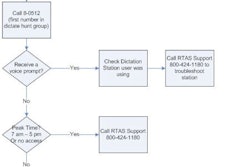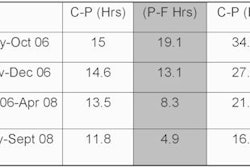In theory, the American Recovery and Reinvestment Act of 2009, signed by President Barack Obama on February 17, will give healthcare providers, vendors, and end users of healthcare IT a $20 billion shot in the arm.
The legislation authors aim to make the use of comprehensive electronic health records (EHR) nearly ubiquitous within ten years, deployed in 70% of all U.S. hospitals and in 90% of the offices and clinics of all U.S. physicians.
The major goals of the legislation are:
- To require the federal government to take a leadership role to develop standards by 2010 for nationwide electronic exchange and use of health information to improve the quality and coordination of patient care
- To invest $20 billion in health IT infrastructure and Medicare/Medicaid incentives to motivate healthcare providers and organizations to electronically exchange the health information of patients, while preventing misuse of this information by strengthening federal privacy and security laws
- To save the federal government $10 billion by reducing duplicative care and medical errors and improving the quality of care and care coordination
Healthcare IT-specific funding allocations include those shown in the table below.
|
The legislation addresses the costs cited by healthcare professionals and healthcare organizations as the foremost barrier to EHR adoption by offering incentive payments, according to analysis by the Healthcare Information and Management Systems Society (HIMSS) in Chicago. It aims to accomplish this goal by creating an Office of the National Coordinator, providing state grants and Medicare-funded incentives, and fostering education and research programs.
Office of the National Coordinator
The Office of the National Coordinator will be responsible for coordinating health IT policy and programs, endorsing standards and certification criteria, and updating the Federal Health IT Strategic Plan. The funds allocated to its operations will also support the work of a federal healthcare IT advisory policy committee, a healthcare IT standards committee, and the National eHealth Collaborative, according to HIMSS.
This agency will also be responsible for developing a health IT research center, with regional offices, to provide technical assistance and develop or recognize best practices. In addition, the agency will establish a health IT extension program to provide health IT assistance services to be carried out through the Department of Health and Human Services (HHS).
State grants and Medicare-funded financial incentives
Grants to states or state-designated entities will be allocated by the Department of Health and Human Services. States may be required to provide in-kind contributions prior to fiscal year 2011, and they will be required in ensuing years to provide an HHS-specified percentage of grant funding, HIMSS said.
Grants may be made to states and Native American nations after January 1, 2010, for loans to healthcare providers for EHR-related technology purchases and implementation.
Medicare financial incentive payments to physicians will consist of $18,000 in the first year of certified EHR implementation if it takes place in 2011 or 2012, $15,000 if implementation occurs in 2013, and $12,000 if the technology is installed in 2014. Payments in the second through fifth years of utilization will be $12,000, $8,000, $4,000, and $2,000 respectively. Physicians who do not adopt EHR technology by 2015 will have a 1% penalty in the fee schedule, increasing up to 3% by 2017, according to HIMSS.
EHR-certified technology must include patient demographic and clinical information, provide physician order entry, and have the capability to transfer information securely to other healthcare entities, HIMSS said.
Annual financial incentives for hospitals will include a base of $2 million plus $200 for each hospital discharge, beginning with the 1,150th discharge and terminating at the 23,001st discharge. Financial incentive payments will also be made, probably starting in fiscal year 2011, to Medicaid provider professionals and hospitals with certified EHR technology for maintenance and training expenses, according to HIMSS.
Education and research programs
Centers for Healthcare Information Enterprise Integration will be established at academic institutions, nonprofit organizations, and federal laboratories for the purpose of generating innovative approaches to healthcare information enterprise integration and the development of health IT, according to HIMSS.
Academic institutions establishing or expanding medical health informatics education degree and certification programs for both healthcare and IT students will be eligible for funding from the National Science Foundation, HIMSS said.
Academic programs integrating certified EHR technology into the clinical education of health professionals may receive funding. An evaluation of open source technology utilized in health IT systems will also be made, according to HIMSS.
By Cynthia E. Keen
AuntMinnie.com staff writer
February 19, 2009
Related Reading
U.S. health information technology falls short - report, January 12, 2009
HIMSS sends IT wish list to Obama administration, December 18, 2008
About 40% of doctors use electronic records, December 15, 2008
U.S. doctors making slow shift to digital records, June 19, 2008
Copyright © 2009 AuntMinnie.com



















